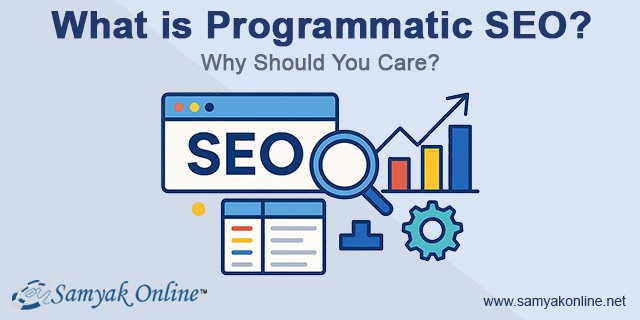Scalable Programmatic SEO: A Smarter Way to Scale Search Visibility
What is Scalable Programmatic SEO?
Scalable programmatic SEO is a method to generate and optimize hundreds or thousands of web pages using structured data and automation. Instead of manually crafting each page, you use templates and databases to create content that’s tailored for long-tail and location-based keywords. This approach is especially useful for eCommerce platforms, affiliate marketers, directories, and service-based businesses.

Why Businesses Choose Programmatic SEO
Businesses looking to grow traffic across a wide range of search queries need more than manual SEO. Programmatic SEO allows for:
- Fast deployment of keyword-rich pages
- Coverage of long-tail keywords at scale
- Better return on SEO investment
- Reduced manual content production
- Consistent on-page optimization
How an Automated SEO Strategy Works
A good programmatic SEO strategy starts with automation and ends with high-quality, indexable content. Key components include:
- Data Source Integration: Product catalogs, service lists, or location data form the content base.
- Template Development: Pages are structured using reusable templates optimized for SEO.
- Dynamic Content Creation: Page text is populated automatically using logic-based scripts.
- Internal Linking System: Automated links help distribute page authority efficiently.
- Schema Markup: Structured data enhances search snippet visibility.
Key Benefits of Intelligent SEO Automation
The goal isn’t just speed. It’s precision at scale. A solid programmatic framework offers:
- Efficient SEO Execution: Automation saves time across research, writing, and publishing.
- Streamlined Content Generation: One template can power hundreds of pages.
- Consistent Quality: No missed metadata, title tags, or headers.
- Adaptability: Easy to adjust keyword targeting or page logic.
- Scalability: Whether you have 50 or 50,000 pages, the system stays efficient.
Powerful SEO Toolset to Support the Process
Implementing programmatic SEO typically involves:
- CMS Integration: WordPress, Webflow, or custom stacks
- Automation Tools: Airtable, Google Sheets, Make, or APIs
- Scripting Languages: Python, JavaScript, or PHP for dynamic logic
- Crawling & Indexing Controls: XML sitemaps, robots.txt, crawl budget optimization
These tools form a robust SEO framework that balances automation with flexibility.
Advanced SEO Techniques to Maximize Visibility
Beyond templates, there’s strategy:
- Entity Mapping: Helps search engines understand and connect concepts
- Semantic Structuring: Ensures your pages rank for related queries
- Content Variation: Prevents duplicate content issues using spintax or NLP
- User Intent Matching: Pages are created to answer specific search needs
A Comprehensive Automation Process in Practice
- Define content logic (e.g., “[Service] in [Location]”)
- Gather structured data from spreadsheets, APIs, or CMS
- Create optimized templates with SEO best practices baked in
- Generate at scale using automation tools or scripts
- Audit and refine for quality, indexability, and performance
Final Thoughts
Scalable programmatic SEO is not just about automating for the sake of speed. When done right, it helps you build targeted, search-optimized content at scale without sacrificing quality. For businesses aiming to grow their digital footprint efficiently, it offers a proven path to long-term organic traffic growth.
Read more: Scalable Programmatic SEO: A Smarter Way to Scale Search Visibility
Leave a Reply
Want to join the discussion?Feel free to contribute!